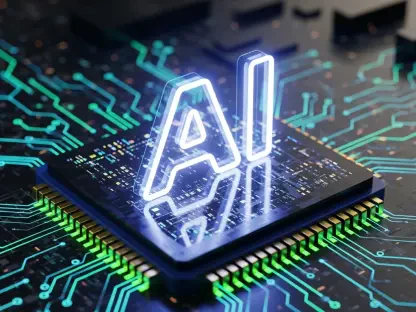I’m thrilled to sit down with Anand Naidu, our resident development expert, whose proficiency in both frontend and backend technologies offers unparalleled insights into the evolving world of AI and coding. With a deep understanding of various programming languages and a keen eye on AI advancements, Anand is the perfect person to guide us through the critical role of benchmarks in AI progress. In this engaging conversation, we’ll explore how these standardized evaluations shape AI development, the challenges of keeping benchmarks relevant as models improve, and their emerging significance as gatekeepers in high-stakes industries. We’ll also dive into the specific evolution of benchmarks for AI coding agents and their potential as credentialing systems for future AI applications.
How would you describe AI benchmarks, and why do they play such a vital role in the development of AI systems?
AI benchmarks are essentially standardized tests or evaluations that measure the performance and capabilities of AI models. They’re like yardsticks that help developers understand how well a model performs specific tasks, whether it’s understanding language, solving math problems, or writing code. Their importance lies in providing a consistent way to compare models, track progress, and identify areas for improvement. Without benchmarks, it’d be nearly impossible to gauge whether an AI system is truly getting better or to ensure it can handle real-world challenges. They also foster reproducibility, meaning other developers can replicate results and build on them, which is crucial for advancing the field.
Can you walk us through how benchmarks have evolved over time, from early frameworks to the more complex ones we see today?
Sure, early benchmarks like GLUE focused primarily on natural language understanding tasks—think sentence similarity or answering straightforward questions. They were groundbreaking at the time because they gave us a way to systematically test language models. But as AI capabilities grew, so did the need for more sophisticated evaluations. Today’s benchmarks tackle far tougher challenges, like maintaining coherence over long conversations, reasoning across text and images, or solving graduate-level problems in science and math. They also look beyond just accuracy to assess things like robustness, efficiency, and even how well a model explains its reasoning. It’s a shift from basic competency tests to real-world readiness.
What happens when AI models start to “saturate” benchmarks, and how does this impact their usefulness?
When we say a benchmark is “saturated,” it means AI models are scoring so high—often near-perfect—that the test can no longer distinguish between good and great performance. It’s like giving a college-level exam to PhD students; it just doesn’t challenge them anymore. This limits the benchmark’s ability to drive innovation because developers can’t see where to push further. It creates a kind of arms race where researchers have to keep designing harder, more nuanced tests that reflect real-world complexities. The goal is to stay ahead of AI progress, ensuring benchmarks remain relevant and don’t just become a checkbox for models to pass.
Let’s talk about AI coding agents. How have benchmarks for these systems changed in recent years to keep up with their growing capabilities?
Benchmarks for coding AI have come a long way. Early ones, like HumanEval, focused on simple tasks like generating small Python functions from a prompt. That was a good start, but it didn’t capture the full scope of software development. Now, newer benchmarks like SWE-bench test whether an AI can handle real-world scenarios, such as fixing bugs in GitHub issues from popular open-source projects. These tasks involve understanding multiple files, managing dependencies, and even running integration tests—stuff that mirrors what human developers deal with daily. It’s a huge leap toward evaluating practical, hands-on skills rather than just isolated coding exercises.
What are some of the emerging areas that coding AI benchmarks are starting to explore, and why do they matter?
We’re seeing benchmarks expand into areas like devops automation—think managing CI/CD pipelines—and security-focused tasks, such as spotting vulnerabilities in code. There are also tests for interpreting product requirements and turning them into actionable code plans, or even migrating entire applications between language versions, like from Python 2 to 3. These areas matter because they reflect the broader responsibilities of modern developers. AI coding agents aren’t just writing snippets anymore; they’re expected to contribute to full software lifecycles, including security and deployment. Benchmarks in these domains ensure AI can handle those complex, high-stakes roles reliably.
The idea of AI benchmarks being akin to “bar exams” for lawyers is intriguing. How do you see this concept applying to AI systems in critical fields?
I think the analogy is spot on. Just as a bar exam ensures lawyers are competent to practice, AI benchmarks could serve as a certification that a system is trustworthy for specific applications, especially in fields like healthcare or finance where mistakes can have huge consequences. For instance, an AI writing code for a medical device might need to pass tests aligned with safety standards, proving it understands regulatory requirements. This kind of credentialing could build public and industry trust in AI, ensuring only qualified systems are deployed. It’s about accountability—making sure AI earns its place in high-stakes environments.
As benchmarks become gatekeepers for AI in sensitive areas, what challenges do you foresee in their design and implementation?
One big challenge is creating benchmarks that truly reflect real-world performance rather than allowing AI to “game” the system by overfitting to test data. There’s also the issue of cost and effort—building something comprehensive like SWE-bench takes months of work, domain expertise, and constant updates as AI evolves. Another hurdle is ensuring fairness so that benchmarks don’t favor certain models or approaches over others. And finally, translating benchmark success to actual on-the-ground reliability is tricky; a high score doesn’t always mean an AI will perform flawlessly in unpredictable, real-world scenarios. These are tough problems that need ongoing attention.
Looking ahead, what is your forecast for the role of benchmarks in shaping the future of AI development and deployment?
I believe benchmarks will become even more central as AI integrates deeper into our lives. They’re likely to evolve into standardized credentialing systems across industries, much like certifications for professionals. We’ll see more domain-specific tests—think AI “exams” tailored for medicine, law, or education—that ensure systems meet strict safety and ethical standards before deployment. At the same time, I expect a push for more dynamic, adaptive benchmarks that can keep pace with rapid AI advancements. Ultimately, they’ll act as both a quality control mechanism and a public trust signal, guiding how AI is regulated and accepted in society. It’s an exciting, challenging road ahead.









